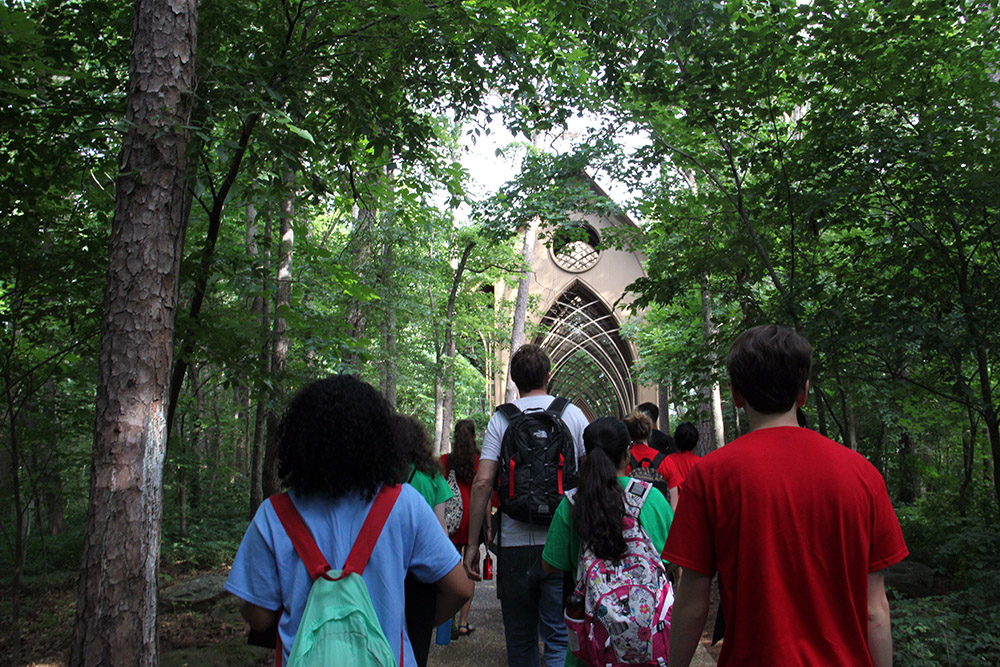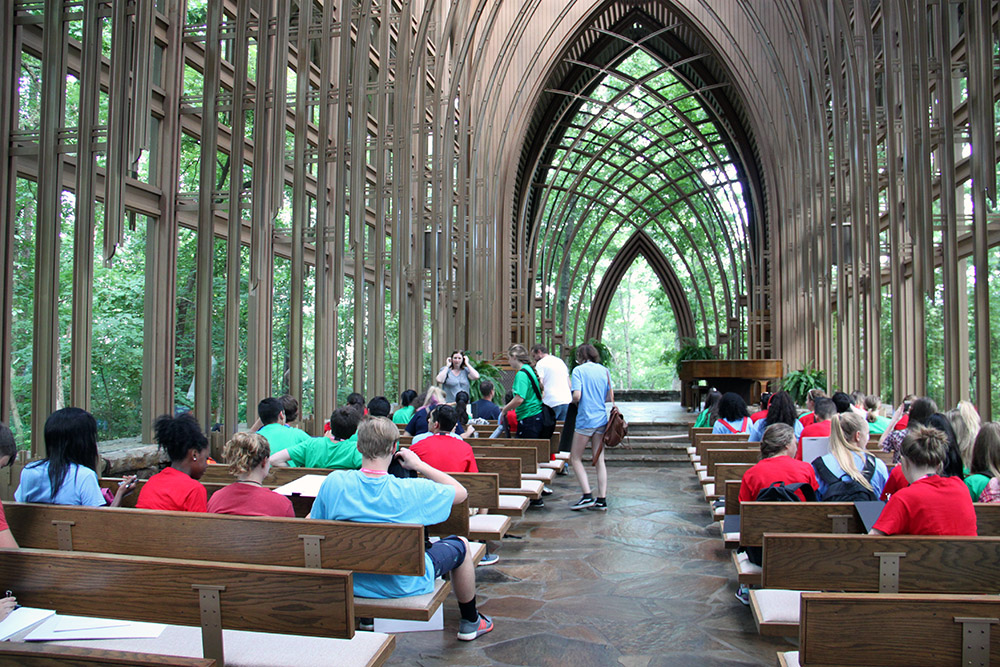By Alex Gladden
During the weeklong Design Camp session held on the University of Arkansas campus in Fayetteville last week, students and their instructors took one day for a field trip. They visited both Mildred B. Cooper Memorial Chapel and Crystal Bridges Museum of American Art, which allowed them to experience world-class art and architecture.
“Many have already been to these places, but it’s a different perspective,” said Noah Billig, a Design Camp instructor.
Chris O’Neal, a high school senior from Marion, Arkansas, was among the students who were in the Design I group, which was for first-time campers. O’Neal had been to Crystal Bridges around five times previously but had never been to Cooper Chapel. He said that while he was excited to visit both locations, he was more excited to visit Cooper Chapel.
Both Cooper Chapel and Crystal Bridges were created within the context of their landscapes, which is important because it teaches the students how to make their buildings match the space, said Carly Bartow, a Design Camp teaching assistant.
The students first rode the bus from the university campus to Cooper Chapel in Bella Vista. While in the chapel, the instructors gave the students a brief history of Fay Jones, who was born in Pine Bluff and grew up in El Dorado.
“Jones often talked about being influenced by growing up in Arkansas and the cave and the tree house – being grounded and lifted up,” said Alison Turner, an instructor and director of Design Camp.
While at Cooper Chapel, the instructors encouraged the students to sketch a section drawing of the chapel. They were specifically supposed to focus on the transition from interior to exterior.
“How does the landscape bleed out from the building, and how does the building emerge from the landscape?” Billig said.
Previous Design Camp students from the past four years also have visited Cooper Chapel, which is a great example of Jones’ work and architecture in landscape, Turner said.
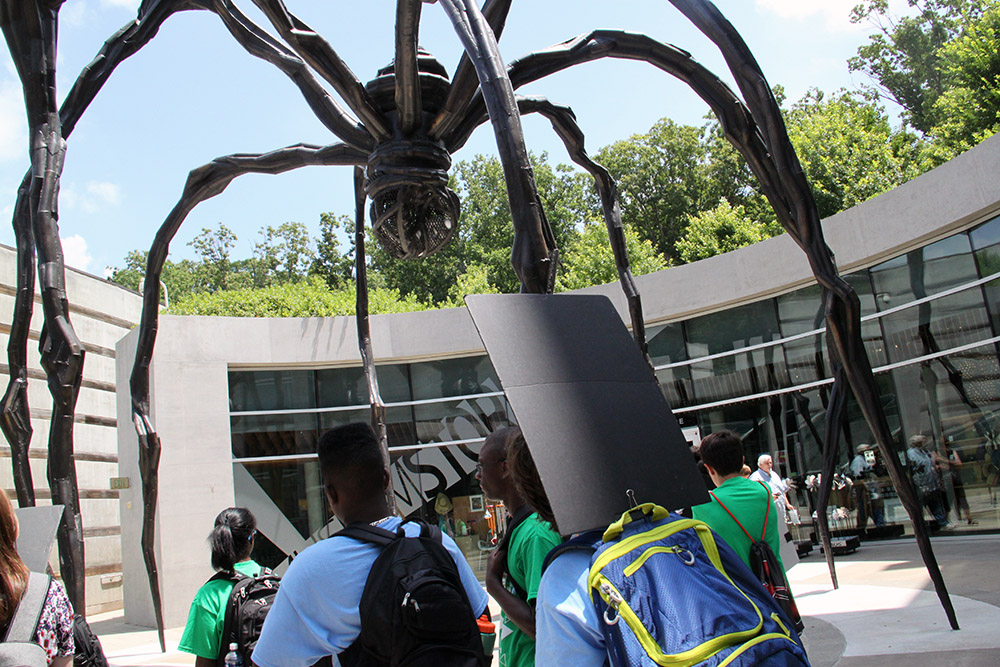
Students gather in the courtyard entryway at Crystal Bridges Museum of American Art in Bentonville. “Maman,” created by the sculptor Louise Bourgeois in 1999, is made from bronze, stainless steel and marble.
Following the visit to Cooper Chapel, the students traveled to Crystal Bridges in Bentonville.
“We picked Crystal Bridges because there are just so many opportunities and things for them to see,” Turner said.
Crystal Bridges is one of the best, if not the best, collections of American art, Billig said.
When the students arrived at Crystal Bridges, they walked to the Tulip Tree Shelter, where they had a quick lunch. At the shelter, the instructors used the structure as an example of how an outdoor classroom, the design project for Design I students, could be designed.
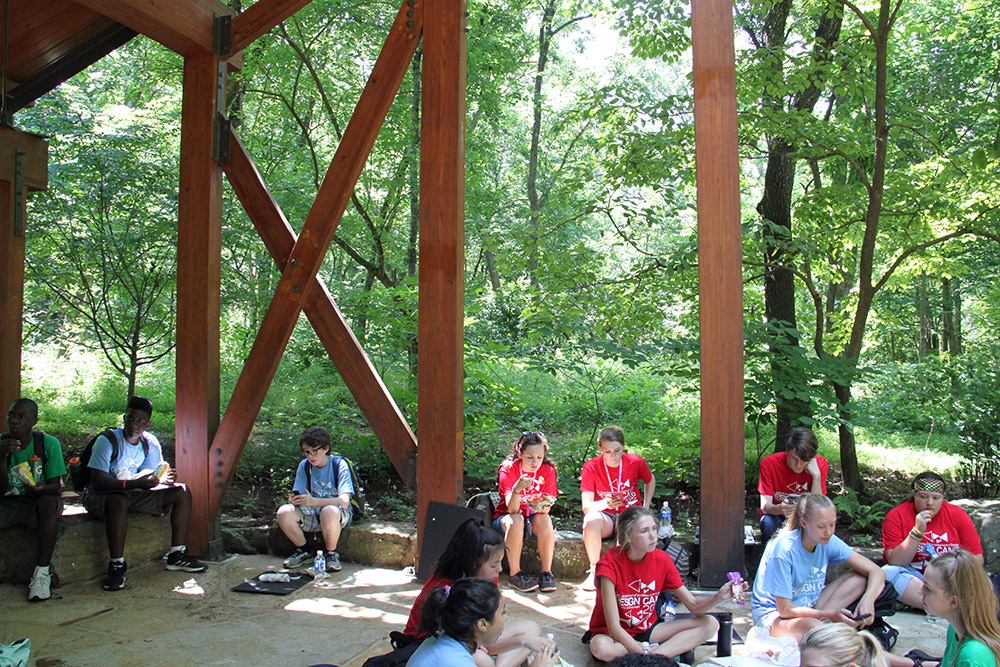
Students eat lunch under the Tulip Tree Shelter, located along a trail about 300 yards south of Crystal Bridges museum. Its original function was as a mockup for the roof of the museum’s Great Hall.
While at Crystal Bridges, the students toured the gallery and examined the trail system; the Bachman-Wilson House, designed by Frank Lloyd Wright; the home’s Welcome Pavilion; and the museum’s store.
In the gallery, the instructors told the students to go through the exhibits and find a piece of art that spoke to them. The students were then supposed to sit in front of the piece and sketch how it made them feel through gestural sketching.
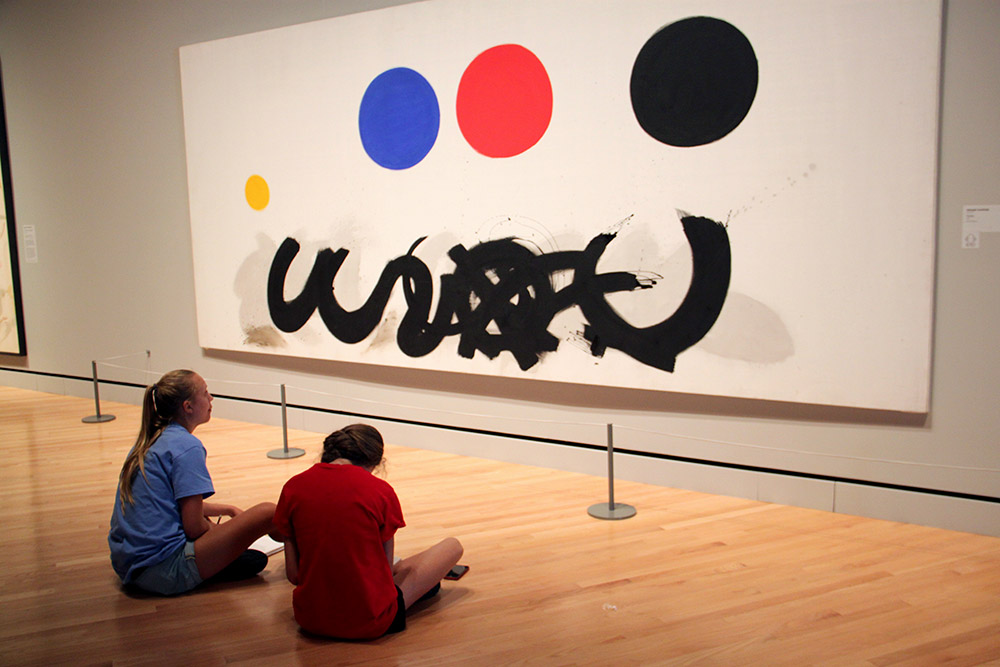
Students create gestural sketches inside one of the galleries of Crystal Bridges Museum of American Art in Bentonville.
The students were not scheduled to tour inside the Bachman-Wilson House, but one group was allowed inside due to a break between scheduled public tours. This gave the students an insight to how precise Wright’s designs were.
The students were able to observe how the cracks in the floor lined up perfectly with the furniture. A museum official said that, at sunset, the sun cast shadows on the floor that also lined up with the cracks – all features that Wright specifically designed.
All of the students were able to see the Bachman-Wilson House from the outside and visit the Welcome Pavilion, which was designed and built by Fay Jones School students.
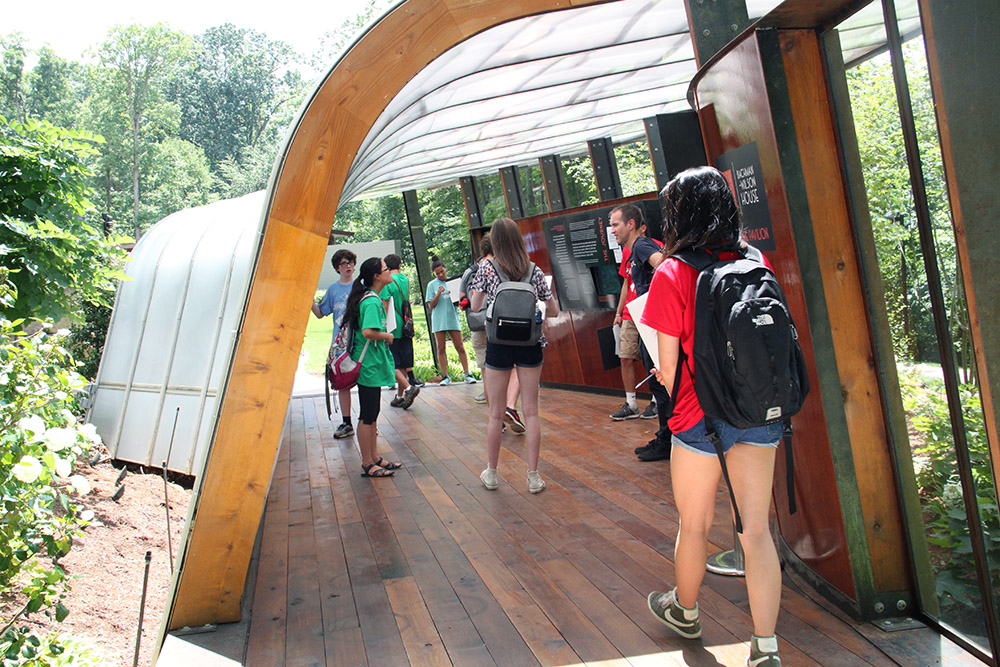
Students visit the Welcome Pavilion to the Bachman-Wilson House, designed by Frank Lloyd Wright. Fay Jones School students designed and built the pavilion for Crystal Bridges.
The students also visited the museum store, designed by Marlon Blackwell Architects of Fayetteville, to examine the interior design.
Field trips are an important tool in teaching because “there’s only so much you can describe verbally,” said Carl Smith, a Design Camp instructor.
Morgan Strickland, a Design Camp teaching assistant, said that she thought the daylong field trip was the most enjoyable part of the camp.
The Design Camp field trip is set up similarly to the field trips that Fay Jones School students take each year as part of their studios, Turner said.
Strickland said that she could relate to students because the field trip she attended as a first-year architect student allowed her to learn a lot.
Experience is very important, Smith said.
“It tends to live longer in their memories,” he said.
